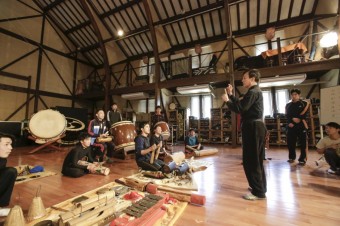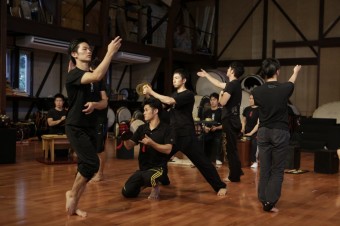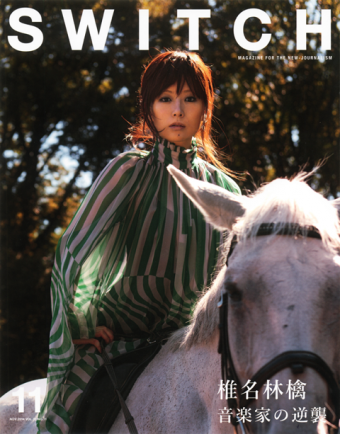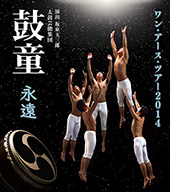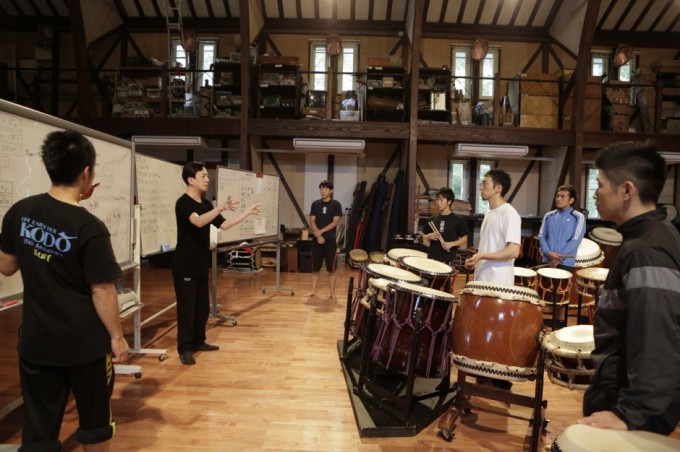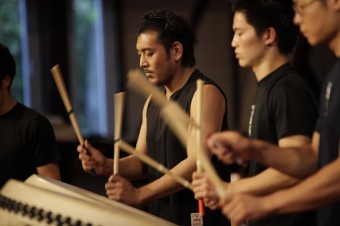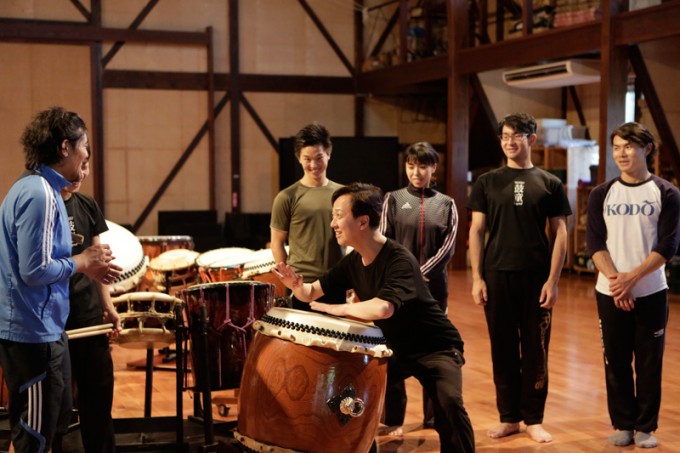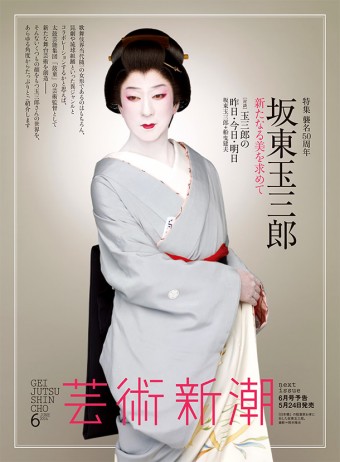Tag ‘Tamasaburo Bando’
TV Appearance: tvk “Kodo Eien no Hibiki” (Kodo, Echoes of Eternity)
tvk Programme “Kodo Eien no Hibiki” (Kodo, Echoes of Eternity)
On Nov. 22, a special progamme featuring Kodo will be aired on Television Kanagawa (tvk) in Japan.
*Photos are not from TV footage
This TV programme was filmed this autumn and features one of the key cast members, Masayuki Sakamoto, giving a tour around Kodo Village, shows the Kodo members off-stage & up-close, as well as taking at behind-the-scenes look at the regimented training they undergo to become performers on the Kodo stage.
The programme will also introduce “Eternity, our brand new production that will tour around Japan from late November through December, alongside various other works directed by and in collaboration with Tamasaburo Bando in recent years.
If you’re in Japan, we hope you’ll tune in!
Television Kanagawa (tvk) “Kodo Eien no Hibiki” (Kodo, Echoes of Eternity)
Broadcast Date & Time: Nov. 22 (Sat) from 18:30
*Date and time are subject to change without notice.
Article in “SWITCH” Magazine
The latest issue of “SWITCH” magazine (Oct. 20) features interviews with cast members Yuichiro Funabashi and Masayuki Sakamoto about Kodo’s upcoming production, “Kodo One Earth Tour: Eternity.” (Article in Japanese/On sale in Japan) If you’re in Japan, we hope you’ll take a look.
Switch Official Website
Switch Vol. 32 No.11 Ringo Shina “Musician’s Counterattack”
(Published on October 20, 2014 by Switch Publishing)
Kodo “A New Style of Freedom”
“Two years have passed since Tamasaburo Bando assumed the role of Kodo’s artistic director. We snuck into the Kodo rehearsal hall, amidst an air of supple intensity.”
Video Introducing New Production “Kodo One Earth Tour: Eternity”
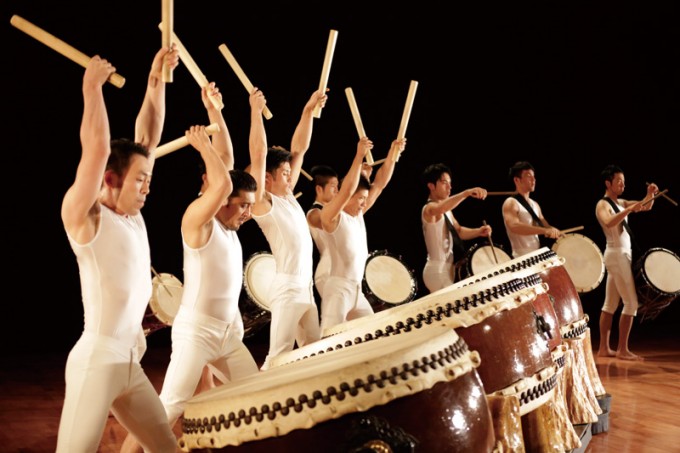
We are proud to present the third work directed by artistic director Tamasaburo Bando: an evolutionary performance entitled “Eternity.” This production will premiere on Sado Island in November and tour around the major cities in Japan from late November through December.
▶Watch on YouTube: http://youtu.be/8_BHh_OyRVs
“Kodo One Earth Tour: Eternity”
http://www.kodo.or.jp/news/20141120oet_en.html
Nov. 20 (Thu) Amusement Sado, Sado Is., Niigata
Nov. 30 (Sun) City Hall Plaza “Aore Nagaoka,” Nagaoka, Niigata
– “Heartbeat Project” Special Version –
Dec. 2 (Tue) Muza Kawasaki Symphony Hall, Kawasaki, Kanagawa
Dec. 4 (Thu) Aichi Prefectural Arts Theater Concert Hall, Nagoya, Aichi
Dec. 6 (Sat) & 7 (Sun) NHK Osaka Hall, Osaka City
Dec. 10 (Wed) Okayama Civic Hall, Okayama City
Dec. 12 (Fri) Ueno Gakuen Hall, Hiroshima City
Dec. 15 (Mon) & 16 (Tue) Hakataza Theater, Fukuoka City
Dec. 19 (Fri) – 23 (Tue/Public Hol.) Bunkyo Civic Hall, Bunkyo Ward, Tokyo
Dec. 25 (Thu) Niigata Prefectural Civic Center, Niigata City
Yuichiro Funabashi: An Interview by Johnny Wales
Interview with Yuichiro Funabashi by Johnny Wales
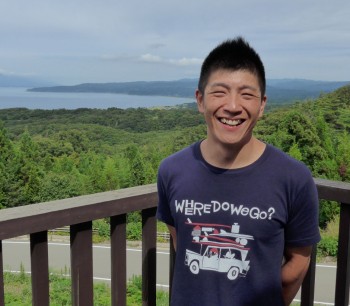
Yuichiro Funabashi (Photo: Johnny Wales)
Yuichiro Funabashi was born on May 9th, 1974 in Kanagawa Prefecture near Tokyo. He grew up in suburban Ninomiya. His father was a salary man and his mother worked in a hospital. He had one sister, 6 years older. He remembers his childhood fondly, describing himself as a life–of–the–party type playing soccer and baseball outside every day. Spinning tops were all the rage, (to put things in historical context) so there was plenty of that too. This was the very tail-end of the baby boom so there were children everywhere, 1,000 students alone in his elementary school, so there was no lack of friends to play with.
In middle school he joined the volleyball club. This became the centre of his world, 7 days a week, until he entered high school. Though his high school was nearby, it had even more students and he felt adrift among all the strange faces. Apart from dabbling in two wildly-divergent interests, American football and the tea ceremony, and some part-time work on archeological digs, he more or less coasted through 3 very dark years. In spite himself though, he did manage to get good enough marks to consider university. He was accepted into the Kyoto University of Art and Design where he studied archeology and artifact conservation. He enjoyed going on digs and he also became interested in marine archeology. It was while preparing for his scuba diving license that his life came to one of those great crossroads. Taiko entered his life.
“Rehearsals for New Production ‘Eternity'” by Yosuke Kusa
“Kodo One Earth Tour: Eternity” Rehearsals
Rehearsals have been going well for our new production, “Eternity,” which premieres at the end of this year.
The sun rises, the wind blows, rain falls, and the stars appear in the still of night.
Since ancient times, nature has created repetitive patterns that this production will express on stage, through the sensibilities of Tamasaburo Bando and our own senses gained through life on Sado Island.
“Eternity” debuts on Sado Island on Nov. 20 and will tour throughout Japan. We look forward to sharing it with you all!
Photos: Takashi Okamoto
“Kodo One Earth Tour: Eternity”
Nov. 20 (Thu) Amusement Sado, Sado Is., Niigata
Nov. 30 (Sun) City Hall Plaza “Aore Nagaoka,” Nagaoka, Niigata
–”Heartbeat Project” Special Version–
Dec. 2 (Tue) Muza Kawasaki Symphony Hall, Kawasaki, Kanagawa
Dec. 4 (Thu) Aichi Prefectural Arts Theater Concert Hall, Nagoya, Aichi
Dec. 6 (Sat) & 7 (Sun) NHK Osaka Hall, Osaka City
Dec. 10 (Wed) Okayama Civic Hall, Okayama City
Dec. 12 (Fri) Ueno Gakuen Hall, Hiroshima City
Dec. 15 (Mon) & 16 (Tue) Hakataza Theater, Fukuoka City
Dec. 19 (Fri)–23 (Tue/Public Hol.) Bunkyo Civic Hall, Bunkyo Ward, Tokyo
Dec. 25 (Thu) Niigata Prefectural Civic Center, Niigata City
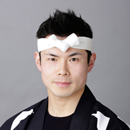
News: Article in “SINRA” Magazine
Article in “SINRA” Magazine
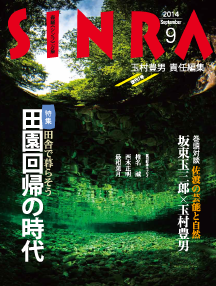
An interview with our artistic director Tamasaburo Bando and an article introducing Kodo are featured in the September 2014 issue of “SINRA” magazine. If you’re in Japan, we hope you’ll take a look.
SINRA WEB|http://sinraweb.jp/ (In Japanese)
“SINRA” September 2014 issue
Price: 1,200 yen (incl. sales tax)
On sale from July 24, 2014.
News: Article in Magazine “Geijutsu Shincho”
Article featuring Tamasaburo Bando & Kodo in Magazine “Geijutsu Shincho”
An article featuring our artistic director Tamasaburo Bando and Kodo is featured in the June 2014 issue of “Geijutsu Shincho” (Shinchosha Publishing), coming out on May 24. It is full of pictures and stories about the “Kodo One Earth Tour: Mystery” production. We hope you’ll take a look.
Shinchosha Publishing Website|http://www.shinchosha.co.jp/geishin/ (in Japanese)
“From ‘Amaterasu’ to ‘Mystery’: Part 4″ by journalist Sachiko Tamashige
From “Amaterasu” to “Mystery”: Part 4
Article by journalist Sachiko Tamashige
“Mystery” directed by Tamasaburo Bando
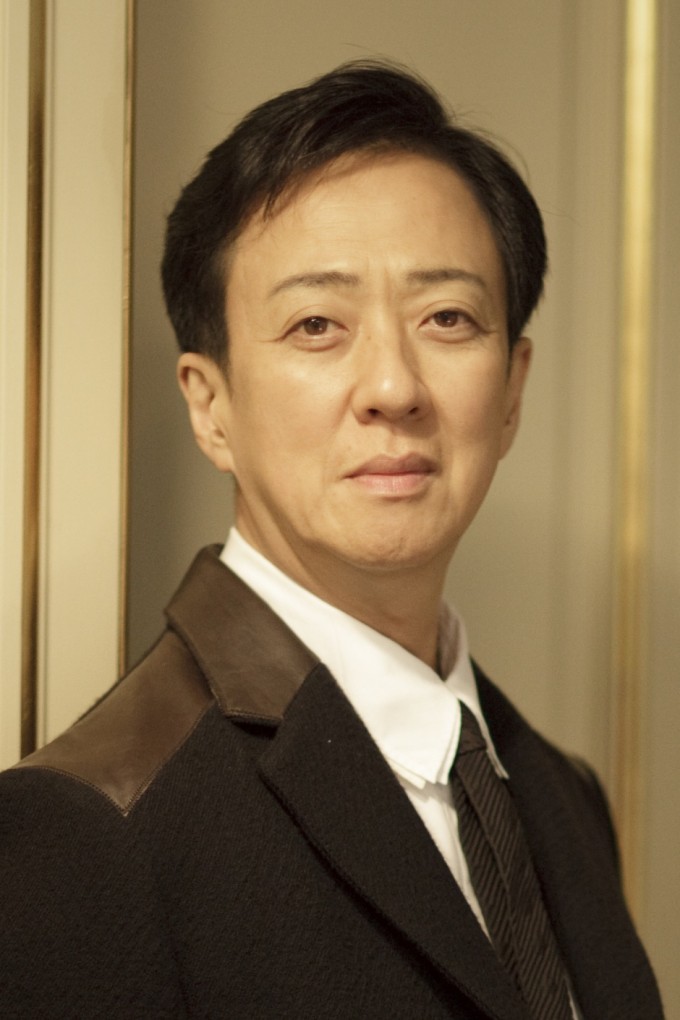
Tamasaburo Bando,
Artistic Director
The audience may wonder what kind of idea lies behind the production of “Mystery.” To address this, Tamasaburo Bando wrote the following note prior to the opening:
“It’s hard to put into words, but I’m aiming to create a world of mystery. Across Japan, the folk arts have been handed down for countless generations. There’s a sacredness there, an air of mystery within each prayer. The drums express this, and I would like for the audience to feel it, too. I hope theatergoers will experience the same sort of otherworldly splendor that you sense in temples, shrines, and moments of discovery in the forest. I also want people to enjoy darkness: the beauty of something you come across lit by candlelight, a sense that is both vague and marvelous. Peel back the layers surrounding mystery and you find fear, humor, charm, and other varied and significant qualities. In the “Serpent Dances” that have come down from old, the defeated serpent is endowed with a surprising level of sacredness. In this performance, many things will emerge from out of the darkness. While it’s essentially a drum concert, playing as only drums can play, we’ve added plenty of visual interest. A moment of wonder means nothing unless you are actually present to experience it. Religious rituals as well as the arts have been refined over centuries, using inspiration from those who came before us. In this drumming performance, I hope that the audience will enjoy to the fullest that magical sense of space and time.”

“Mystery” introduces new theatrical elements and acting parts to the Kodo stage
Just before the opening, I asked the artistic director Tamasaburo the following question: “What is ‘Mystery’ all about ?”
“From ‘Amaterasu’ to ‘Mystery’: Part 3″ by journalist Sachiko Tamashige
From “Amaterasu” to “Mystery”: Part 3
Article by journalist Sachiko Tamashige
Iwami Kagura: Feeling the Heat and Beat in Shimane Prefecture
Yosuke Kusa admires Taizo Kobayashi, his teacher of Iwami Kagura (Iwami: a region, the west part of Shimane Prefecture/ Kagura: dance and music for the kami, or deities): “Taizo looks so cool when he claps his hands to pray for deities in front of the household Shinto altar. Even his everyday routines show his integrity, which is also reflected in his Kagura performance. Kagura is not just about dancing — it is also the way a performer lives their life.” Yosuke met Taizo at the Kyoto University of Art and Design when Taizo ran an Iwami Kagura workshop. Around ten years ago, he started visiting Taizo in his hometown of Yunotsu, Shimane Prefecture.
Taizo’s primary job is making masks for Iwami Kagura. In September of 2013, two cast members of Jamai — Yosuke and Shogo Komatsuzaki — spent two weeks at Taizo’s studio to learn the serpent dance, as well as experience life with the local people. Yosuke and Shogo tried to get to the heart of the Kagura by visiting local shrines, going for runs in the surrounding nature and exchanging ideas and music techniques through sessions with members of a local group of Iwami Kagura. “The local people live with the deities by practicing rituals to either purify themselves or show their gratitude,” Yosuke added, “Iwami Kagura is nourished and enlivened by the way the locals live their lives, and it has been handed down from their ancestors to future generations. Iwami Kagura is also a way for adults to teach good behavior and adherence to the social code to their children. I would like to learn not only the forms and techniques but also its spirit, which links our lives with our direct experience on stage.”

Mr. Kobayashi makes masks at the Kobayashi Workshop.
An array of Kagura masks await their chance to spring into action.
“From ‘Amaterasu’ to ‘Mystery’: Part 2″ by journalist Sachiko Tamashige
From “Amaterasu” to “Mystery”: Part 2
Article by journalist Sachiko Tamashige
Behind the Scenes of “Mystery”
Jamai — the “Serpent Dance” — is derived from Orochi, known as “the Great Serpent Dance” from Iwami Kagura (Iwami: a region, the west part of Shimane Prefecture/ Kagura: dance and music for the kami, or deities).The Kodo cast members of Jamai absorbed the skill and spirit of this traditional folk dance by learning from local performers while in Shimane as artists in residence. Iwami is the name of this area in the western part of Shimane Prefecture. Iwami is famous for its historical site, Iwami Ginzan, the largest silver mine in Japan, a world heritage site. Kagura was originally performed to summon kami (deities) during traditional rituals of worship in shrines and other sacred places. Japanese traditional music, dance and festival culture has its roots in these ancient rituals. Taiko, or the Japanese traditional drum, was once regarded as a sacred instrument because of its magical power to conjure up the deities for tasks such as bringing rain to a region in need.

The Kodo cast members of Jamai absorbed the skill and spirit of this traditional folk dance by learning from local performers while in Shimane as artists in residence.




